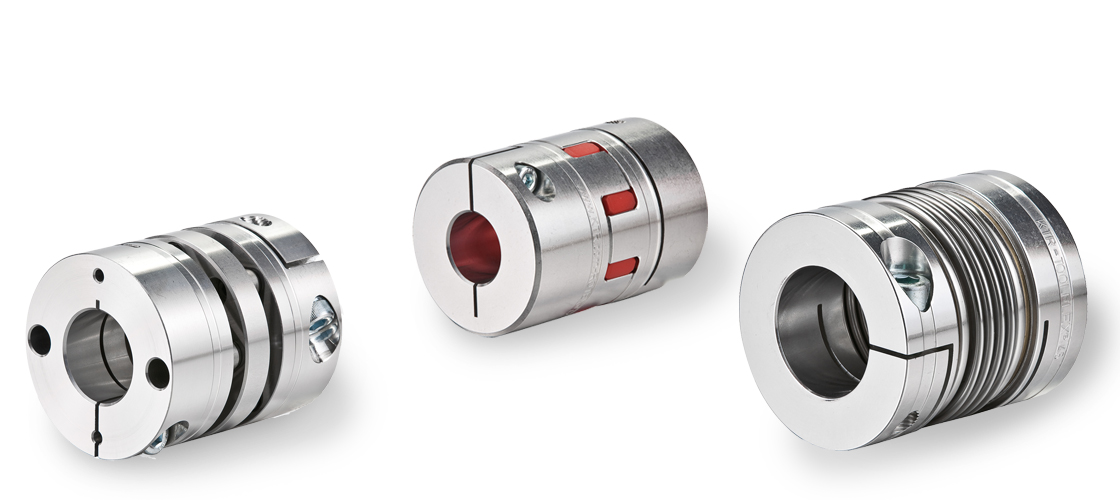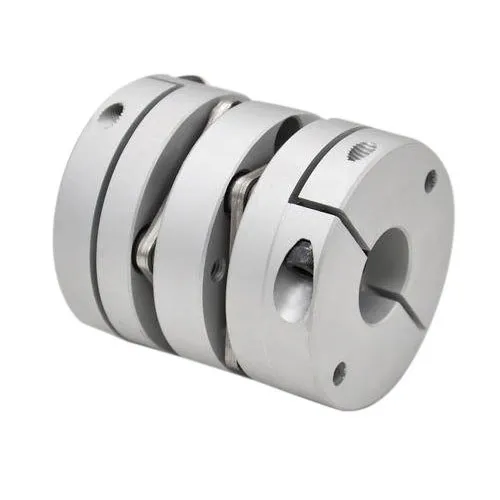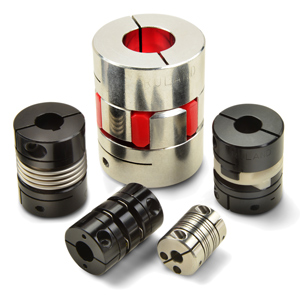Product Description
Flexible flex Fluid Chain Jaw flange Gear Rigid Spacer PIN HRC MH NM universal Fenaflex Oldham spline clamp tyre grid hydraulic servo motor shaft Coupling
Product Description
The function of Shaft coupling:
1. Shafts for connecting separately manufactured units such as motors and generators.
2. If any axis is misaligned.
3. Provides mechanical flexibility.
4. Absorb the transmission of impact load.
5. Prevent overload
We can provide the following couplings.
| Rigid coupling | Flange coupling | Oldham coupling |
| Sleeve or muff coupling | Gear coupling | Bellow coupling |
| Split muff coupling | Flexible coupling | Fluid coupling |
| Clamp or split-muff or compression coupling | Universal coupling | Variable speed coupling |
| Bushed pin-type coupling | Diaphragm coupling | Constant speed coupling |
Company Profile
We are an industrial company specializing in the production of couplings. It has 3 branches: steel casting, forging, and heat treatment. Main products: cross shaft universal coupling, drum gear coupling, non-metallic elastic element coupling, rigid coupling, etc.
The company mainly produces the industry standard JB3241-91 swap JB5513-91 swc. JB3242-93 swz series universal coupling with spider type. It can also design and produce various non-standard universal couplings, other couplings, and mechanical products for users according to special requirements. Currently, the products are mainly sold to major steel companies at home and abroad, the metallurgical steel rolling industry, and leading engine manufacturers, with an annual production capacity of more than 7000 sets.
The company’s quality policy is “quality for survival, variety for development.” In August 2000, the national quality system certification authority audited that its quality assurance system met the requirements of GB/T19002-1994 IDT ISO9002:1994 and obtained the quality system certification certificate with the registration number 0900B5711. It is the first enterprise in the coupling production industry in HangZhou City that passed the ISO9002 quality and constitution certification.
The company pursues the business purpose of “reliable quality, the supremacy of reputation, commitment to business and customer satisfaction” and welcomes customers at home and abroad to choose our products.
At the same time, the company has established long-term cooperative relations with many enterprises and warmly welcomes friends from all walks of life to visit, investigate and negotiate business!
How to use the coupling safely
The coupling is an intermediate connecting part of each motion mechanism, which directly impacts the regular operation of each motion mechanism. Therefore, attention must be paid to:
1. The coupling is not allowed to have more than the specified axis deflection and radial displacement so as not to affect its transmission performance.
2. The bolts of the LINS coupling shall not be loose or damaged.
3. Gear coupling and cross slide coupling shall be lubricated regularly, and lubricating grease shall be added every 2-3 months to avoid severe wear of gear teeth and serious consequences.
4. The tooth width contact length of gear coupling shall not be less than 70%; Its axial displacement shall not be more significant than 5mm
5. The coupling is not allowed to have cracks. If there are cracks, it needs to be replaced (they can be knocked with a small hammer and judged according to the sound).
6. The keys of LINS coupling shall be closely matched and shall not be loosened.
7. The tooth thickness of the gear coupling is worn. When the lifting mechanism exceeds 15% of the original tooth thickness, the operating mechanism exceeds 25%, and the broken tooth is also scrapped.
8. If the elastic ring of the pin coupling and the sealing ring of the gear coupling is damaged or aged, they should be replaced in time.
Certifications
Packaging & Shipping
/* January 22, 2571 19:08:37 */!function(){function s(e,r){var a,o={};try{e&&e.split(“,”).forEach(function(e,t){e&&(a=e.match(/(.*?):(.*)$/))&&1

Specific Safety Guidelines for Installing and Using Servo Couplings
Servo couplings are crucial components in motion control systems, and their installation and usage require adherence to specific safety guidelines to ensure safe operation and prevent accidents. Here are some essential safety considerations:
- Read the Manufacturer’s Instructions:
Always read and follow the manufacturer’s installation and usage instructions for the specific servo coupling model. Each coupling may have unique requirements and limitations that need to be understood before installation.
- Inspect the Coupling:
Prior to installation, inspect the servo coupling for any signs of damage or defects. Do not use a coupling that appears to be damaged, as it may compromise the overall performance and safety of the system.
- Proper Alignment:
Ensure the correct alignment of the shafts before installing the servo coupling. Misalignment can cause excessive stress on the coupling and lead to premature failure.
- Secure Mounting:
Ensure that the servo coupling is securely mounted to the shafts and other components. Use appropriate fasteners and follow torque specifications provided by the manufacturer.
- Use Safety Guards:
In some applications, moving parts of the servo coupling may pose a risk of entanglement or pinch points. Consider using safety guards or covers to protect personnel from potential hazards.
- Stay within Load and Torque Ratings:
Do not exceed the maximum load and torque ratings specified by the manufacturer. Overloading the servo coupling can lead to catastrophic failure.
- Regular Inspection and Maintenance:
Perform regular inspections of the servo coupling and associated components. Check for wear, misalignment, and any other issues that may affect the coupling’s performance.
- Operating Environment:
Consider the operating environment and choose a servo coupling material that can withstand the conditions, such as temperature, humidity, and exposure to chemicals.
- Electric Safety:
If the servo coupling contains electrical components, follow electrical safety guidelines when installing and connecting these elements.
- Training and Awareness:
Ensure that personnel involved in the installation, operation, and maintenance of the motion control system are adequately trained and aware of the safety guidelines and potential hazards.
Following these safety guidelines will help ensure the safe and efficient operation of the servo coupling and contribute to the overall safety of the motion control system and personnel involved.

Specialized Servo Couplings for Harsh Environments and Corrosive Conditions
Yes, there are specialized servo couplings specifically designed for use in harsh environments or corrosive conditions. These couplings are engineered with materials and features that provide enhanced durability and resistance to environmental factors. Here are some types of specialized servo couplings for such conditions:
- Stainless Steel Servo Couplings: Stainless steel couplings are highly corrosion-resistant and suitable for applications where exposure to moisture, chemicals, or corrosive substances is a concern. They offer excellent performance in harsh and corrosive environments.
- Plastic Servo Couplings: Plastic couplings, made from materials like polyurethane or PEEK, are resistant to corrosion and chemicals. They are ideal for applications that involve exposure to aggressive substances and where metallic couplings may not be suitable.
- Hermetic Sealing: Some servo couplings come with hermetic sealing, providing an airtight and watertight enclosure. These couplings are used in environments where ingress of dust, moisture, or other contaminants must be prevented.
- Coated Surfaces: Certain servo couplings feature coatings like zinc, nickel, or chrome to provide an additional layer of protection against corrosion and wear. These coatings can extend the lifespan of the coupling in demanding environments.
- Non-Metallic Elements: Specialized servo couplings may use non-metallic elements, such as composite materials, to improve corrosion resistance while maintaining flexibility and torque transmission capabilities.
When selecting a servo coupling for harsh environments or corrosive conditions, it’s essential to consider factors like the specific corrosive agents, operating temperature, and the coupling’s compatibility with the application requirements. Using the right specialized servo coupling can ensure reliable and long-lasting performance in challenging industrial settings.

What is a Servo Coupling, and Its Role in Servo Motor Systems
A servo coupling is a specialized type of coupling used in servo motor systems to connect the servo motor shaft to the driven load. Servo motor systems are widely used in various industries for precise motion control applications, where accuracy, speed, and torque control are crucial. The servo coupling plays a vital role in ensuring the efficient transfer of motion and torque from the servo motor to the driven load while compensating for misalignments between the motor and load shafts.
The main functions and role of a servo coupling in a servo motor system are as follows:
- Motion Transmission: The primary function of a servo coupling is to transmit motion from the shaft of the servo motor to the load. It connects the motor shaft to the driven load, such as a ball screw, gearbox, or another mechanical component, enabling the motor to drive and control the motion of the load precisely.
- Torque Transmission: In addition to motion, the servo coupling also transfers torque from the motor to the load. As the servo motor generates rotational force (torque), the coupling efficiently transmits this torque to the driven load, allowing it to perform its intended motion with the required force.
- Misalignment Compensation: Perfect alignment between the servo motor shaft and the load shaft is challenging to achieve in real-world applications. Any misalignment can cause detrimental effects, including increased wear, reduced performance, and premature failure. The servo coupling acts as a flexible element that can compensate for various types of misalignments, such as angular, parallel, and axial misalignments. This flexibility helps to maintain smooth and efficient power transmission even when the motor and load are not perfectly aligned.
- Damping of Vibrations: Servo motor systems often operate at high speeds and with rapid changes in direction. These dynamic movements can generate vibrations that may adversely affect the performance and lifespan of the system. A well-designed servo coupling can dampen these vibrations, providing a more stable and controlled motion to the load, reducing the risk of damage or inaccuracies.
- Backlash Minimization: Backlash refers to the play or gap between the teeth or components of the coupling when the direction of motion is reversed. Excessive backlash can result in lost motion and reduced precision. High-quality servo couplings are engineered to minimize backlash, ensuring accurate bidirectional motion control in the servo motor system.
Overall, a properly selected and installed servo coupling enhances the performance, efficiency, and reliability of servo motor systems. It protects sensitive components, such as bearings and motors, from excessive loads and vibrations, leading to extended equipment life and improved motion control capabilities.


editor by CX 2024-03-26
